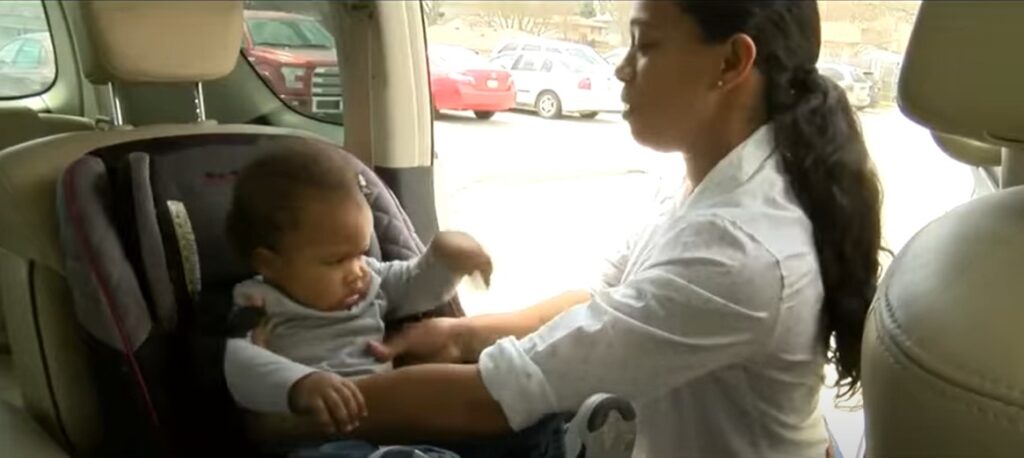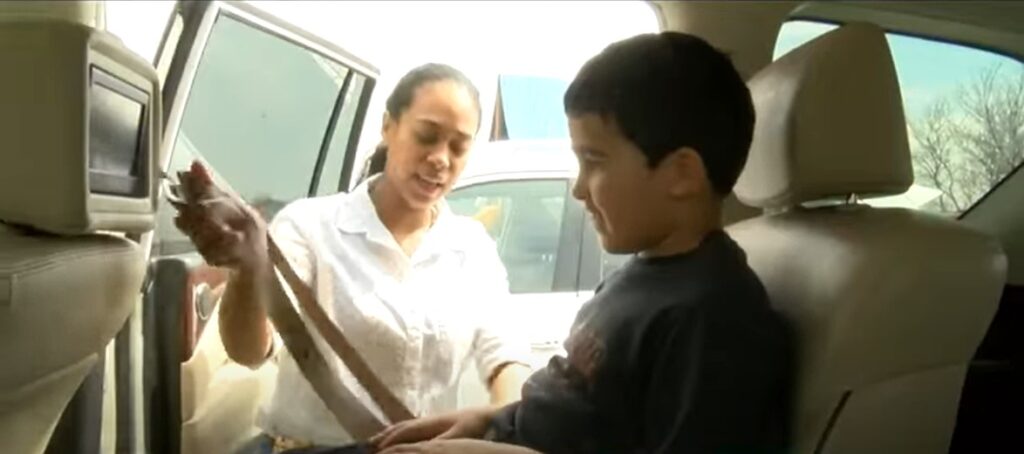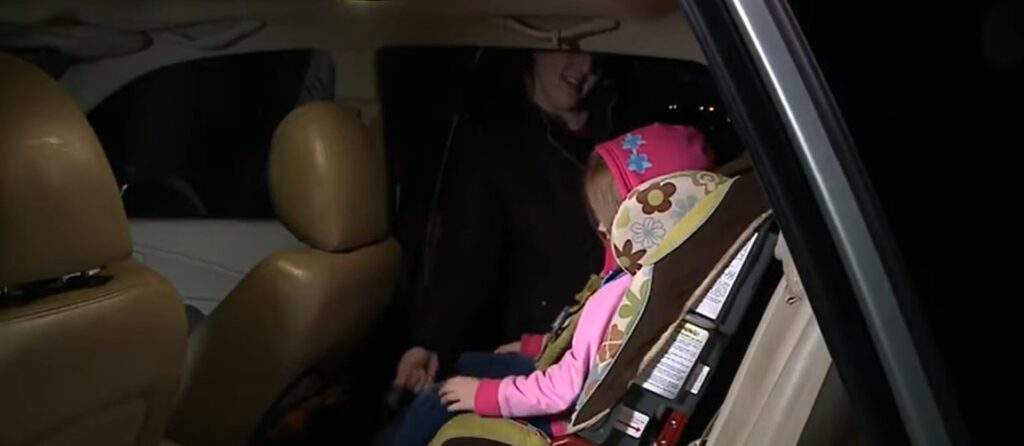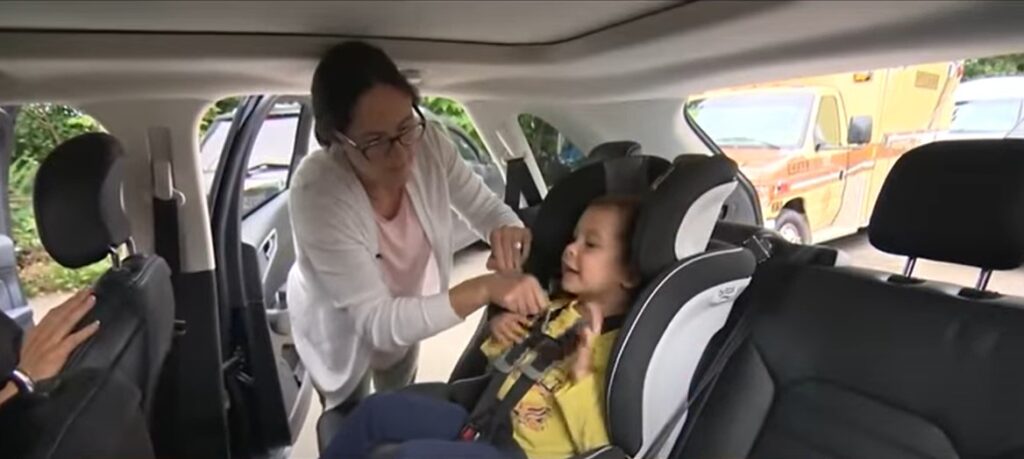In Nebraska, car seat laws require that all children under the age of eight be properly secured in a child passenger restraint system. Children who are eight years old or older and weigh more than 80 pounds may be properly secured by an adult safety belt. Child passenger restraint systems must comply with federal motor vehicle safety standards.
Children under the age of eight must be restrained in a car seat or booster seat that is appropriate for their height and weight. Nebraska law requires all children to be properly secured in an approved child safety restraint system while riding in a motor vehicle on a public road or highway.
In this blog post, we will go into details on Nebraska car seat laws height weight so that you can learn what to do when you’re on wheels. Therefore, to keep your child safe and save you from possible Nebraska fines, keep reading this article.

Understanding Nebraska Car Seat Laws Height Weight
When it comes to car seats, there are three main types: infant-only seats, convertible seats, and booster seats.
Infant-only seats can only be used in the rear-facing position and must be attached to a base that is secured in the vehicle using the LATCH system or a seat belt.
Convertible seats can be used in both the rear- and forward-facing positions, while booster seats are only for use in the forward-facing position.
All car seats must be properly secured using either the LATCH system or a seat belt, depending on which one is compatible with your vehicle. It’s important to note that Nebraska law requires all children under eight years old to ride in a child passenger restraint system, regardless of weight or height. However, there are some exceptions for certain medical conditions and physical disabilities.
If you have questions about whether or not your child meets these exceptions, you should contact your local police department or sheriff’s office for more information.
Nebraska Booster Seat Laws
Nebraska booster seat laws are in place to protect children from serious injury or death in the event of a motor vehicle accident. Under these laws, children who are under eight years old or less than four feet nine inches tall must be properly secured in a child safety seat or booster seat.
The booster seat must meet federal safety standards and be used in accordance with the manufacturer’s instructions. Failure to comply with these laws can result in fines and other legal consequences.
Parents and caregivers are encouraged to educate themselves on the current Nebraska booster seat laws to ensure the safety of their children while traveling in a motor vehicle.

Booster Seat Guidelines Weight and Height Nebraska
Nebraska booster seat guidelines for weight and height are important considerations for parents and guardians to ensure the safety of their children while traveling in a vehicle.
According to state law, children younger than eight years of age must be secured in a federally approved car seat or booster seat. Additionally, children who weigh under 80 pounds or are less than 57 inches tall must be secured in a booster seat.
It is crucial for parents to follow these guidelines to prevent injury or fatality in case of an accident. It is advisable to refer to the manufacturer’s guidelines for specific weight and height requirements for booster seats.

What is the Age And Weight for a Booster Seat in Nebraska?
According to the Nebraska Department of Transportation, children must be at least 4 years old and weigh 40 pounds or more to ride in a booster seat. Booster seats are required for all children under 8 years old who weigh less than 80 pounds. Children 8 years old or older may use an adult seat belt if it fits properly.
What Height And Weight Can You Stop Using a Car Seat?
Most car seats have height and weight limits that are clearly marked on the seat. Once your child outgrows the car seat, they can graduate to either a booster seat or to riding in a seat with a lap and shoulder belt. There is no one answer to this question, as different car seats have different limits.
However, most car seats have a maximum height and weight limit that is clearly marked on the seat itself. Once your child outgrows the car seat, they can graduate to either a booster seat or a seat with just a lap and shoulder belt. The American Academy of Pediatrics (AAP) recommends that children ride rear-facing until at least age 2, or until they reach the highest weight or height limit for their car safety seat.
After that, they should ride in a forward-facing car safety seat with harnesses until at least age 5, or until they reach the highest weight or height limit allowed by their car safety seat. The AAP also recommends that all kids ages 4–8 who have outgrown their forward-facing car safety seats ride in booster seats. Children shouldn’t start using an adult lap/shoulder belt alone until they are both tall enough (usually around 4 feet 9 inches) and 8 years old or older.

Nebraska Car Seat Weight Requirements
According to the Nebraska Department of Motor Vehicles, all children under the age of eight must be properly secured in an appropriate child safety seat or booster seat when riding in a motor vehicle. The type of child safety seat or booster seat required depends on the child’s weight and height.
There are four types of car seats that can be used for children: rear-facing only, convertible, forward-facing with harness, and belt-positioning booster.
Rear-facing-only car seats are for infants and toddlers who weigh up to 40 pounds and are no taller than 40 inches. Convertible car seats can be used as either rear-facing or forward-facing seats and can accommodate children up to 80 pounds (or more, depending on the model).
Forward-facing car seats with harnesses are for children who weigh at least 20 pounds and are no taller than 65 inches.
Belt-positioning booster seats are for children who have outgrown their forward-facing car seat with a harness (typically around 4 years old), but are not yet big enough to safely use a lap or shoulder belt alone.
Children should ride in a booster seat until they reach 4 feet 9 inches tall and weigh between 80-100 pounds.
The best way to ensure your child is properly secured in their car seat is to consult the manufacturer’s instructions and/or seek professional help from a certified Child Passenger Safety Technician (CPST).
You can find a CPST near you by visiting www.safekids.org or www.seatcheck.org.

Booster Seat Guidelines Weight And Height
Children should remain in a booster seat until they reach 4’9” in height and are between 8 and 12 years old. The weight limit for most booster seats is 80 pounds. Some seats have higher weight limits of 100 or 120 pounds.
Check your car seat’s label for the weight limit. A child who has outgrown the weight or height limit for a forward-facing car seat should use a belt-positioning booster seat until the vehicle lap or shoulder belt fits properly. This is typically when they reach 4 feet 9 inches in height and are between 8 and 12 years old.
Nebraska Car Seat Laws 5 Point Harness
As a parent, you want to do everything you can to keep your child safe. That’s why it’s important to know the car seat laws in your state. In Nebraska, all children under the age of eight must be properly restrained in a car seat or booster seat.
Children under the age of two must be in a rear-facing car seat. And all children under the age of four must be secured in a 5-point harness car seat. While it may seem like a lot to keep track of, following these laws will help ensure that your child is as safe as possible when riding in the car.
And remember, always consult your car seat’s manual and/or your vehicle’s owner’s manual for specific installation instructions.
Nebraska Car Seat Laws Booster
As of July 2019, Nebraska car seat laws state that all children under the age of eight must be properly secured in a child safety seat or booster seat. Children who are eight years old or older but less than eighteen years old, must be properly secured by a seat belt. All passengers must wear a seat belt, regardless of their age.
There are different types of child safety seats and booster seats available for purchase, so it is important to choose the one that is best suited for your child’s height, weight, and developmental needs. When in doubt, always consult with your child’s pediatrician before making a purchase.
In Nebraska, it is against the law to have a child ride in the front seat of a vehicle if there is an active passenger airbag present.
If you must transport someone who falls into this category, it is best to deactivate the airbag or choose another seating option altogether.
Following these simple guidelines can help ensure a safe and enjoyable ride for everyone involved!
South Dakota Car Seat Laws
South Dakota Child Passenger Safety Laws According to South Dakota law, all children under the age of six must be properly secured in an appropriate child passenger safety seat when riding in a motor vehicle. The type of child safety seat that is required depends on the child’s weight and height.
For example, infants and toddlers under 20 pounds must ride rear-facing in a car seat designed for their size. Children who have outgrown their rear-facing seats can ride forward-facing in a harnessed car seat until they reach the maximum weight or height limit for that particular seat.
Once a child has outgrown their forward-facing car seat with a harness, they can use a belt-positioning booster seat until they are big enough to safely use an adult lap or shoulder belt.
There are some exceptions to these general guidelines. For instance, if all available restraint systems in a vehicle are being used by smaller children, then a child over the age of six may be unrestrained (i.e., not using any car seat or booster). Additionally, certain medical conditions may warrant an exception to using a car seat or booster.
If you have questions about whether your child needs to be restrained in a certain way, please consult your pediatrician or another medical expert. It is important to note that South Dakota’s Child Passenger Safety laws are minimum requirements.
In other words, it is always safest to keep your child restrained in an appropriate manner for as long as possible – even beyond what is legally required.
Additionally, please make sure that you are familiar with how to properly install and use whatever type of car seat or booster your child will be riding in. Improper installation and/or usage can greatly reduce the effectiveness of the restraint system and put your child at risk in the event of a crash.
When Can a Child Sit in the Front Seat in Nebraska?
In Nebraska, a child under the age of 13 must sit in the back seat. There are a few exceptions to this rule, such as if the vehicle only has two seats or if all other seats are occupied by children under the age of 13. If you have any questions about where your child should sit in your vehicle, you can contact the Nebraska Department of Motor Vehicles.

How much do you have to weigh to sit in the front seat in Nebraska?
Nebraska’s law does not specify a specific weight requirement for sitting in the front seat of a vehicle. However, there are guidelines set forth by the American Academy of Pediatrics (AAP) recommending that children under the age of 13 should ride in the back seat of a vehicle.
This is because the front seat carries a higher risk of injury during a crash, especially for children who have not yet reached the recommended height and weight limits for seat belts.
It is important for parents and caregivers to follow these guidelines to ensure the safety of all passengers in the vehicle.
Iowa Car Seat Laws
As of July 1, 2017, all children under the age of 2 must be in a rear-facing car seat. All children under the age of 8 must be in a child passenger restraint system (car seat or booster seat). Children over the age of 8 can use a lap and shoulder belt if they are tall enough (4’9” or taller).
All car seats and boosters must be used according to the manufacturer’s instructions. If you have questions about how to use your car seat or booster, please contact your local law enforcement agency or the Iowa State Patrol office. Children should remain in a rear-facing car seat for as long as possible.
It is recommended that children ride rear-facing until at least 4 years old. When using a forward-facing car seat with a harness, keep your child in the seat until he or she reaches the maximum height or weight limit for that particular seat. After outgrowing the harnessed car seat, move your child to a belt positioning booster seat and use both lap/shoulder belts.
Use only one belt across your child’s body when riding in a booster; never put the shoulder strap behind them or under their arm! Child Passenger Safety Week is September 16–22, 2019! This year’s theme is “Buckle Up for Every Ride,” because EVERY trip counts—even short ones around town!
Visit www.iowaseatsafechildrenscoalition.org for more information on Booster Seat Belt Fit Tips and other resources during Child Passenger Safety Week and beyond!
High Back Booster Seat Requirements
If you have a young child who has outgrown their forward-facing car seat with a harness, you may be wondering if it’s time to switch to a booster seat. Booster seats are designed for children who are too big for a car seat with a harness, but are not yet big enough to sit in a vehicle without one.
In order to use a booster seat, your child must be at least 4 years old AND weigh 40 pounds or more.
If your child meets BOTH of these requirements, they can safely ride in a booster seat. Booster seats must be used with both the lap and shoulder belts in order to work properly. The shoulder belt should fit snugly across the chest and rest on the shoulder, NOT on the neck or face.
The lap belt should fit low and snug across the hips and upper thighs, NOT on the stomach. When using a high-back booster seat, make sure that the headrest is properly positioned so that it supports your child’s head and neck in case of an accident.
It’s also important that there is NO gap between the back of the seat and your child’s back. If there is, use a rolled-up towel or other item to fill the gap so that your child is as safe as possible.
Nebraska’s new car seat law changes requirements
Conclusion
The blog post discusses Nebraska’s car seat laws for children of different heights and weights. It is important for parents to be aware of these laws to ensure their child’s safety while riding in a vehicle.
